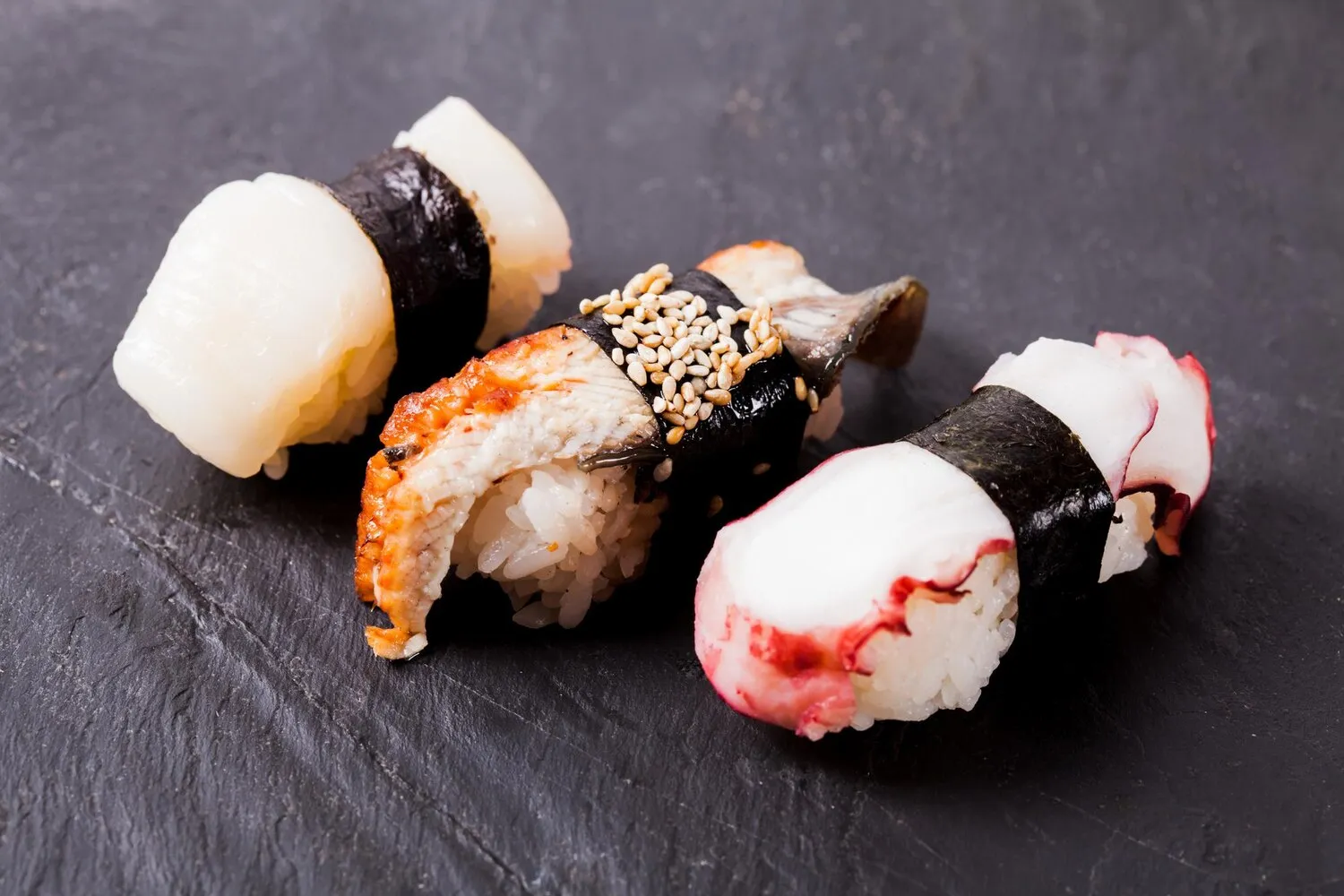
Salmon
Fresh salmon nigiri.
Nutrition Facts
* The % Daily Value (DV) tells you how much a nutrient in a serving of food contributes to a daily diet. 2,000 calories a day is used for general nutrition advice.
Salmon has been a staple food source for millennia, particularly in coastal communities of the Northern Hemisphere. Indigenous populations relied heavily on salmon as a primary source of protein and fat. Over time, various cultures have developed distinct methods of preparing salmon, influenced by local ingredients and culinary traditions. Techniques like smoking, curing, and grilling have ancient roots, while more modern methods such as baking, steaming, and pan-frying have emerged with advancements in cooking technology and globalization of food cultures.
Salmon holds significant cultural importance in many regions, particularly those with indigenous populations who have historically relied on it as a primary food source. It is also commonly associated with healthy eating and is frequently featured in celebratory meals and special occasions.
Indigenous Traditions
For many indigenous cultures in the Pacific Northwest and other salmon-rich regions, salmon is not merely a food source but a sacred symbol representing life, abundance, and cultural identity. Salmon fishing and preparation are often accompanied by rituals and ceremonies that honor the fish and ensure its continued abundance.
Health and Wellness
Salmon is widely recognized as a healthy food due to its high content of omega-3 fatty acids, protein, and essential nutrients. This has contributed to its popularity as a staple in health-conscious diets and as a recommended food choice by nutritionists and healthcare professionals.
Culinary Celebrations
Salmon is often served at celebratory meals, holidays, and special occasions. It is considered a versatile and elegant dish that can be adapted to suit a variety of culinary styles and preferences, making it a popular choice for entertaining.
The dish offers a balance of rich, savory salmon flavor complemented by the freshness of vegetables and a sauce that enhances the overall taste profile.
The primary flavor is the distinct taste of salmon, which varies slightly depending on the species (e.g., Atlantic, Sockeye, Coho). Salmon generally has a rich, oily flavor with a tender, flaky texture. Vegetables contribute freshness and can range from subtly sweet (peas, carrots) to slightly bitter (broccoli, asparagus). Sauces provide an additional layer of flavor complexity, often incorporating elements of acidity (lemon juice, vinegar), sweetness (honey, maple syrup), or spice (chili flakes, ginger). Herbs like dill, parsley, and thyme are commonly used to enhance the overall aroma and taste.
Salmon Selection
Consider the species of salmon when purchasing. Sockeye salmon has a richer flavor and redder color, while Coho is milder. Farmed salmon is typically more affordable but may have a different flavor profile than wild-caught. Look for firm, vibrant flesh with a fresh, sea-like smell.
Cooking Techniques
Avoid overcooking salmon, as it can become dry and tough. Use a meat thermometer to ensure it reaches an internal temperature of 145°F (63°C). Steaming or baking at a lower temperature (around 350°F or 175°C) can help retain moisture. Sear skin-side down for a crispy texture.
Sauce Pairings
Select a sauce that complements the flavor of the salmon and vegetables. Lemon-dill sauce is a classic pairing, while teriyaki sauce adds a sweet and savory element. Creamy sauces like hollandaise or béarnaise can also be delicious. Ensure the sauce is not too overpowering, allowing the salmon's natural flavor to shine.
Explore additional Japanese dishes and restaurants
Explore JapaneseDiscover top dining spots and culinary experiences in New York.
Explore New YorkLearn more about the food culture, restaurant scene, and culinary heritage of United States.
Explore United States